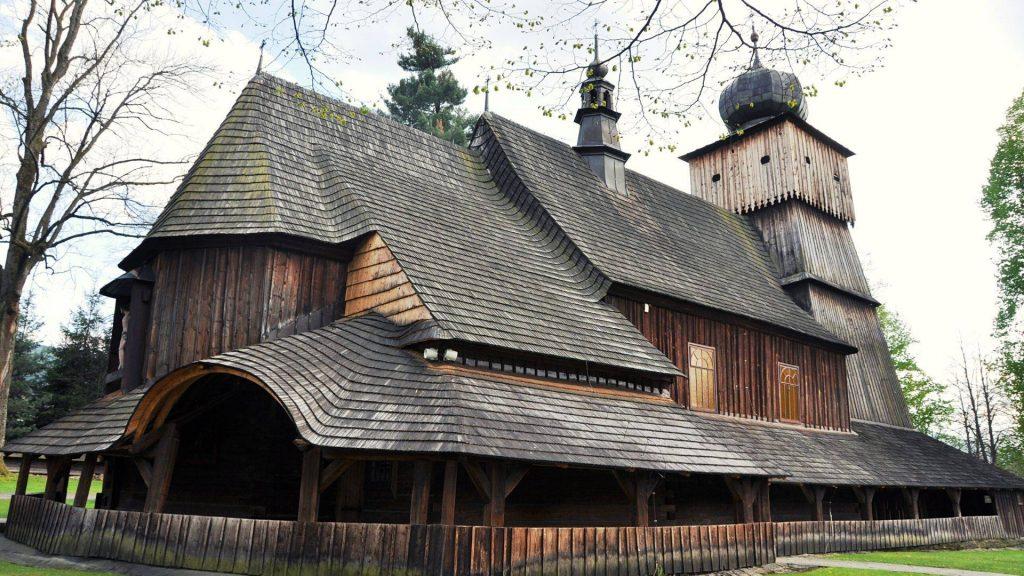Burial/funeral regulations in a Catholic wooden church in 16th century?
2
votes
1
answer
83
views
I have the following piece of report from the year 1596 about a wooden parish church located in southern Lesser Poland region, which I struggle to understand, because curical words related to 'sepultura' thing have several meanings and I'd need to have some historic background on the topic:
> Item habet proventus communes pro aedificatione sui: vaccas quatuor (a singulis lactantibus duodecem grossorum, a sterilibus sex grossorum solvuntur), a sepulturis in ecclesia media marca solvitur, sed medietatem plebanus tollit in porticu nihil.
> (...)
> Quod reformationem attinet: (...) A sepulturis in porticu duae saxagenae tegularum conferantur.
It is about church income which could be used for construction works (e.g., the parish had a few cows which were rented by local people). But then there is something about 'sepultura'.
My initial, naive understanding would be that for being buried in that church it costed 1/2 'marca' (i.e. «grzywna», a unit of exchange) for a place in the nave, while a place in the porch was for free.
However, it was a small wooden church, so I doubt there were some huge crypts (if any) in either the nave or the porch.
To complicate matters even more, 'in porticu' can either mean 'in a porch', but also 'within «*soboty*»' (a wooden portico surrounding the church, see here: [*soboty*](https://pl.wikipedia.org/wiki/Soboty) . This particular church had «soboty»). However, even within «soboty» there was not enough space to bury many people (and I doubt there were any burials there since they were often paved with stones).
The church could look like this one (but likely was smaller):
 I suppose that 'sepultura' can mean not only a grave, but also burial, or funeral obsequies (see: https://en.wiktionary.org/wiki/sepultura#Latin ; http://www.perseus.tufts.edu/hopper/text?doc=Perseus:text:1999.04.0059:entry=sepultura) and in this case the last meaning seems to be the most appropriate.
I've read somewhere that in those days the distance between a coffin and the main altar marked the importance of the deceased person and that in Orthodox church funeral in the nave was reserved only for clergy...
Does anyone know something about funerals/burials in Catholic churches in old times and could help me with understanding the above-mentioned passages?
I suppose that 'sepultura' can mean not only a grave, but also burial, or funeral obsequies (see: https://en.wiktionary.org/wiki/sepultura#Latin ; http://www.perseus.tufts.edu/hopper/text?doc=Perseus:text:1999.04.0059:entry=sepultura) and in this case the last meaning seems to be the most appropriate.
I've read somewhere that in those days the distance between a coffin and the main altar marked the importance of the deceased person and that in Orthodox church funeral in the nave was reserved only for clergy...
Does anyone know something about funerals/burials in Catholic churches in old times and could help me with understanding the above-mentioned passages?
 I suppose that 'sepultura' can mean not only a grave, but also burial, or funeral obsequies (see: https://en.wiktionary.org/wiki/sepultura#Latin ; http://www.perseus.tufts.edu/hopper/text?doc=Perseus:text:1999.04.0059:entry=sepultura) and in this case the last meaning seems to be the most appropriate.
I've read somewhere that in those days the distance between a coffin and the main altar marked the importance of the deceased person and that in Orthodox church funeral in the nave was reserved only for clergy...
Does anyone know something about funerals/burials in Catholic churches in old times and could help me with understanding the above-mentioned passages?
I suppose that 'sepultura' can mean not only a grave, but also burial, or funeral obsequies (see: https://en.wiktionary.org/wiki/sepultura#Latin ; http://www.perseus.tufts.edu/hopper/text?doc=Perseus:text:1999.04.0059:entry=sepultura) and in this case the last meaning seems to be the most appropriate.
I've read somewhere that in those days the distance between a coffin and the main altar marked the importance of the deceased person and that in Orthodox church funeral in the nave was reserved only for clergy...
Does anyone know something about funerals/burials in Catholic churches in old times and could help me with understanding the above-mentioned passages?
Asked by Paweł Kłeczek
(123 rep)
Jan 3, 2025, 01:02 PM
Last activity: Jan 4, 2025, 12:25 AM
Last activity: Jan 4, 2025, 12:25 AM